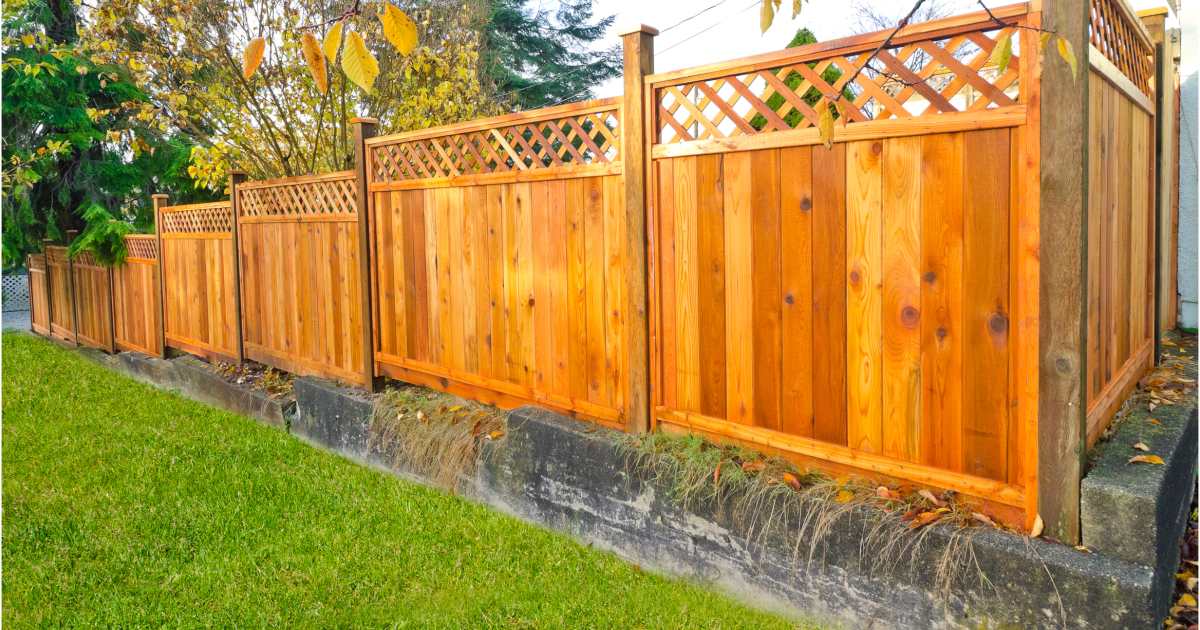All Categories
Featured

While regular upkeep can extend the life of your fencing, there comes a time when fixings no longer are sufficient, and it's time to think about replacement. Here are some vital signs that your fence may require to be replaced.
- Visible Damages or Wear. Wood fences are especially prone to splitting or splintering over time, while vinyl fencings can establish splits. If the damages is prevalent or structural, repairing specific areas may not be enough, and changing the fence comes to be needed.
- Rot and Degeneration. If you notice that components of your fence feel soft to the touch or if you see mold or fungi growing, it's a sign of rot. Small rot can in some cases be repaired, comprehensive degeneration, specifically near the base of fencing posts, can endanger the honesty of the whole fencing.
- Leaning or Tilting. A leaning fence is a clear sign that something is incorrect with its architectural support. Gradually, posts might shift due to soil disintegration, water damages, or perhaps origin growth from neighboring plants. While minor tilting can in some cases be corrected by correcting the articles and securing them, substantial leaning frequently shows that the messages have actually been harmed irreparable. If the fencing remains to lean despite attempts at correction, it may be time to change the affected areas or the whole fence.
- Rust or Corrosion (For Steel Fencings) While minor corrosion can usually be gotten rid of and treated, considerable corrosion that compromises the fencing's security is a sign that replacement is necessary. It's far better to change a heavily rusted metal fencing than to proceed attempting repair work.
- Insect Infestations. Wooden fencings are an usual target for pests like termites, carpenter ants, and rodents. These pests can trigger substantial damages by tunneling right into the wood and compromising its structure. If you notice little openings, sawdust stacks, or actual pests residing in your fencing, it's important to address the problem as soon as possible. In situations where the damage is extreme, the damaged fencing articles or boards might need to be changed to recover the fencing's security.
- Problem Preserving the Fence. If you locate on your own frequently making repairs to the exact same locations of your fencing, it can be an indication that the fence is past its prime. If you're spending more money on covering up old sections than you would on a full replacement, it's time to think about replacing the fencing completely.
- Age of the Fence. The age of your fencing plays a substantial role in its general problem. While the life expectancy of a fencing can vary depending upon the area, material, and climate problems, most fences last in between 15 and two decades. If your fencing is coming close to or surpassing its expected lifespan and revealing indicators of damage, it may be time to change it. Also with normal upkeep, an aging fencing will ultimately need to be replaced to keep its performance and appearance.
- Obsolete Appearance. Sometimes, a fencing just becomes obsolete, no longer matching the style or needs of your building. If your fencing no longer complements your property or satisfies your requirements-- such as personal privacy, safety and security, or appearances-- it might be time to consider a replacement.
- Fence No More Offers Its Purpose. Your needs for a fence can progress over time. In such situations, replacing the fence with one that fulfills your current requirements is the finest choice.

Conclusion. A fence is an integral part of your home's exterior, offering design, safety, and personal privacy. Like any type of structure, it will at some point show signs of aging or damages. If you discover any one of the signs detailed above-- noticeable damages, rot, leaning, pest invasions, or an obsolete look-- it might be time to replace your fence. Replacing an old, worn-out fencing can improve the overall value of your building, enhance security, and give your lawn a fresh look. By keeping an eye out for these indications, you can make an enlightened choice about when it's time to spend in a new fencing.
Latest Posts
Uncover Top Auto Repair Care offered by Montclare Auto Repair – Quality Service Today
Published May 29, 25
1 min read
Join WyHy Federal Credit Union – Smart Money Management for Your Money Goals
Published May 25, 25
1 min read
Uncover Reduce Expenses on Car Maintenance with Montclare Auto Repair’s Special Deals
Published May 23, 25
1 min read
More
Latest Posts
Uncover Top Auto Repair Care offered by Montclare Auto Repair – Quality Service Today
Published May 29, 25
1 min read
Join WyHy Federal Credit Union – Smart Money Management for Your Money Goals
Published May 25, 25
1 min read
Uncover Reduce Expenses on Car Maintenance with Montclare Auto Repair’s Special Deals
Published May 23, 25
1 min read